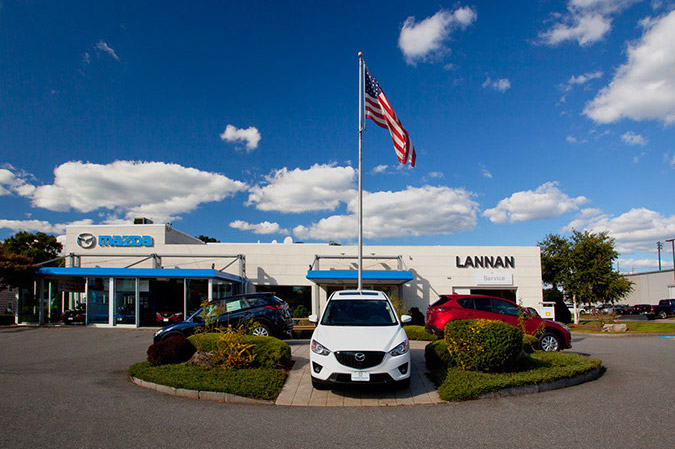
These days, what does the auto shopper path to purchase even look like? I think it’s safe to say that it’s no longer clearly definable, and it’s time to revisit our assumptions and rework the road map.
I recently set out on this path to purchase myself, traversing the waters of online research, national marketing, and local dealer marketing, coming to eventually lean on past dealership experiences. I landed on the Mazda3, purchasing from the Lannan family of dealerships (based in Lowell, MA). While the path zigged and zagged, one thing became clear to me: dealers are the true pillar of the auto shopper experience, and they are in need of digital marketing support from the brands that they sell.
As the digital landscape continues to evolve, the auto shopper path to purchase will only continue to change, as more and more new purchasers will use digital tools to research and learn about cars before visiting a dealership. Auto brands need to follow suit and begin adapting now.
In Google’s article, “Constant Consideration: Brand Choice on the Path to Vehicle Purchase,” they write, “With 63 percent of new vehicle purchasers beginning their search with a specific brand in mind, but only 20 percent purchasing the vehicle they first researched online, it’s clear that brand consideration can be won or lost at any point throughout this loop.”
With this in mind, brands need to ensure that they’re supporting the path their consumers are taking prior to going into a dealership, or else risk losing brand consideration and loyalty. In order to fill in the gaps between the national level and the local level, brands must begin to further connect and align with their dealers.
Dealers have become invaluable to the auto shopper path to purchase, with the ability to amplify brand messaging and connect with local audiences via key digital channels. Many times, however, dealers are either intimidated by digital marketing or simply don’t have the time and resources to develop content. This is where auto brands have the opportunity to step in and provide crucial digital marketing support to their frontline.
As most people would, I began my search for a new car online. After digging around and doing some research, I found myself reading professional reviews that steered me towards Mazda. I wasn’t even going to consider the brand at first, but the Mazda3 received so many top marks that I had to at least take a look. The brand’s site, Mazdausa.com, had some great looking cars that really drew me in. Their new design philosophy, KODO – Soul of Motion, completely changed my perception of the brand.
From there, I took the next logical step and scheduled a test drive. I stayed within the Lannan family of dealers (all based locally in Massachusetts) because of my previous experiences purchasing Chevys from them in the past, and they once again provided an excellent dealership experience, cementing the whole thing.
The sales associate I worked with really went above and beyond to get me as many discounts as he could. He personally picked up my car when it was transferred from another dealership, and since I had completed the paperwork before they could hand over the keys, he offered to deliver the car to me in Cambridge so I didn’t have to make another trip back to Lowell.
The Lannan family of dealerships has been around since 1955, and as we’ve shifted further and further into the digital age, they’ve been adapting along the way. Like many dealerships, Lannan Mazda expands their digital presence with Facebook and Twitter accounts. The trouble, however, is that they are lacking in brand-approved or brand-created Tier 1 digital marketing content. Mazda has an exceptional product, a great brand story and stylish, captivating national marketing content. Just imagine that type of marketing amplified at the local dealer level.
 With their new KODO design philosophy, as well as their new technology systems, Mazda’s vehicle lineup has never been stronger, and they have the national marketing to match. With nearly 2 million Facebook likes and over 250,000 Twitter followers, Mazda has a flourishing national digital marketing strategy that resonates with consumers on many levels. By further connecting and aligning with their local dealers, Mazda could not only amplify this brand reach and messaging but also increase overall dealer engagement and create greater sales opportunities.
With their new KODO design philosophy, as well as their new technology systems, Mazda’s vehicle lineup has never been stronger, and they have the national marketing to match. With nearly 2 million Facebook likes and over 250,000 Twitter followers, Mazda has a flourishing national digital marketing strategy that resonates with consumers on many levels. By further connecting and aligning with their local dealers, Mazda could not only amplify this brand reach and messaging but also increase overall dealer engagement and create greater sales opportunities.
Brands need to make it easier for their dealers to align with national marketing in order to create message consistency at the local level. If auto brands aren’t connecting and aligning with their dealers to reach online customers, they are both constantly missing out on those crucial micro-moments along the consumer journey. Together, brands and dealers can (and should) use storytelling and digital marketing to amplify brand awareness and create meaningful connections with smaller, more concentrated audiences.
How does an auto brand like Nissan align their national marketing efforts with that of their dealers? By partnering with an easy-to-implement, brand-funded solution like Promoboxx. With Promoboxx, they save their dealers time and resources, all while providing them with marketing content that is automatically co-branded to highlight both the brand and the local dealership. Below, take a look at co-branded landing page and Twitter examples for Nissan’s No Charge to Charge campaign:
